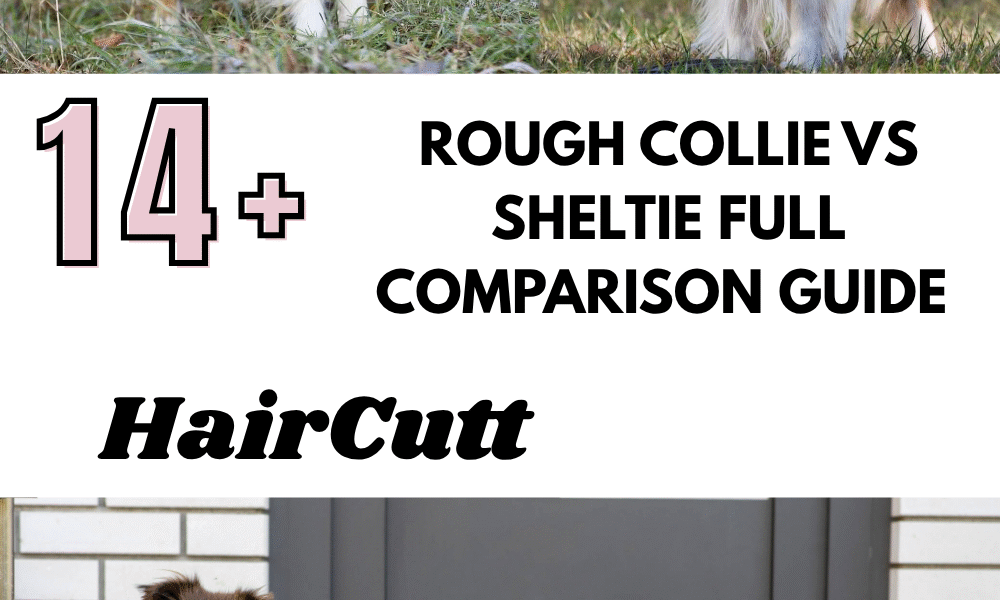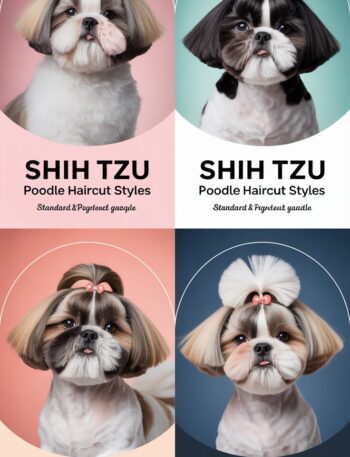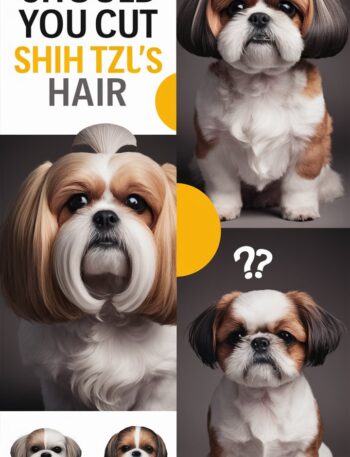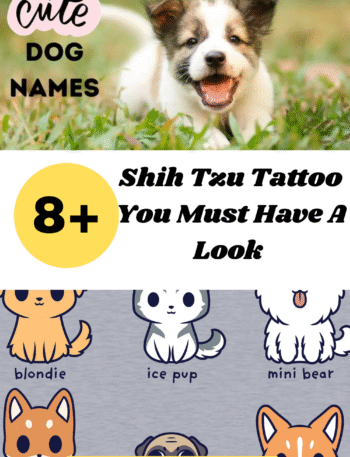If you’re deciding between the Rough Collie and the Shetland Sheepdog (Sheltie), you’re likely struck by their similar looks—but don’t be fooled. While they may appear like one is a miniature version of the other, these two breeds are uniquely distinct in terms of temperament, intelligence, exercise needs, grooming, and even purpose.
In this advanced guide, we go beyond the basics to explore the nuanced differences between these two incredible herding breeds. This is the definitive, expert-level comparison you’ve been searching for.
1. 🧬 Breed Origins and Historical Purpose
📍 Rough Collie
- Origin: Scotland, 1800s
- Purpose: Herding large flocks in the Highland terrain
- Famous for: The Lassie television series
- Lineage: Descended from Scottish herding dogs mixed with English Setter-type dogs for elegance
📍 Shetland Sheepdog (Sheltie)
- Origin: Shetland Islands, Scotland
- Purpose: Herding and guarding small livestock (particularly sheep and ponies)
- Traits Developed For: Alertness, energy conservation, compact size for cold environments
- Lineage: Possibly bred from small working Collies and Spitz-type dogs
🔍 Key Insight:
While both have herding roots, Rough Collies were bred for expansive terrain work; Shelties for nimble, weather-hardened performance in rugged island conditions. This fundamental difference influences their behavior, stamina, and even coat development.
2. 🐕 Physical Appearance: Size, Coat, and Build
| Feature | Rough Collie | Sheltie |
|---|---|---|
| Height | 22–26 inches | 13–16 inches |
| Weight | 50–75 lbs | 15–25 lbs |
| Body Build | Long, elegant, narrow frame | Compact, agile, and solid |
| Head Shape | Refined wedge shape | Shorter wedge, broader skull |
| Coat Type | Long, straight outer coat with dense undercoat | Dense double coat, slightly shorter |
| Color Variants | Sable, Tricolor, Blue Merle, White | Sable, Tricolor, Blue Merle |
| Tail | Long and bushy | Moderately long, feathered |
🔍 Expert Commentary:
Despite visual similarities, Rough Collies have more refined features and a noticeably larger frame. Shelties have a more “fox-like” look, are more alert in stance, and their coat is often denser per body mass due to insulation needs in their native Shetland climate.
3. 🧠 Temperament and Behavior
| Trait | Rough Collie | Sheltie |
|---|---|---|
| Disposition | Calm, gentle, sensitive | Energetic, alert, reserved |
| Attachment | Deep bond with family | Strong attachment, slight aloofness with strangers |
| Children Friendly | Extremely affectionate and gentle | Friendly but may herd small children |
| Watchdog Ability | Moderate | High (barks at new stimuli) |
| Sensitivity | Very high | High, but also more self-contained |
🔍 Behavioral Insight:
Rough Collies are emotionally sensitive and easily distressed by conflict. Shelties are slightly more independent but also more reactive and alert. Both are loving and trainable but in different ways: Rough Collies aim to please; Shelties aim to perform.
4. 🏆 Intelligence and Trainability
According to Dr. Stanley Coren’s intelligence rankings:
- Sheltie: #6 (Top 10 Most Intelligent Breeds)
- Rough Collie: #16
✅ Types of Intelligence:
- Obedience Intelligence: Shelties learn faster in structured obedience routines.
- Emotional Intelligence: Rough Collies respond better to subtle emotional cues—ideal for therapy roles.
- Instinctive Intelligence: Both excel in herding, though Shelties tend to be more precise and focused.
🔍 Training Tip:
Shelties benefit from agility, scent work, and advanced trick routines. Rough Collies thrive on consistency and emotional bonding—perfect for households seeking a calm, cooperative partner.
5. 🏃 Exercise and Activity Requirements
| Requirement | Rough Collie | Sheltie |
|---|---|---|
| Daily Exercise | 45–60 minutes | 60–90 minutes |
| Mental Stimulation | Moderate | High |
| Herding Drive | Strong | Very strong |
| Agility Suitability | Good | Excellent |
🔍 Stimulation Breakdown:
- Shelties require frequent changes in routine to stay happy (e.g., scent tracking, fetch variants, agility courses).
- Rough Collies do best with moderate exercise and companionship-based activities like long walks and light games.
6. 🧼 Grooming and Maintenance
| Grooming Element | Rough Collie | Sheltie |
|---|---|---|
| Brushing | 2–3x per week | 3–4x per week |
| Coat Blowout | Twice annually | Up to 3 times annually |
| Undercoat Care | Moderate | High |
| Matting Areas | Behind ears, thighs | Armpits, behind ears, belly |
| Grooming Cost | $50–80/month professionally | $60–100/month professionally |
🔍 Pro Tip:
Use a long-tooth undercoat rake and slicker brush combination. Always check behind ears and under armpits for matting in both breeds. Shelties are more likely to develop dense tangles if not brushed thoroughly.
7. 🔊 Vocalization and Noise Levels
| Feature | Rough Collie | Sheltie |
|---|---|---|
| Bark Frequency | Low to Moderate | High |
| Triggers | Startled, alarmed | New people, sounds, boredom |
| Trainability to Control | Easy | Moderate |
🔍 Behavioral Note:
Shelties are highly vocal—a trait developed for alerting farmers in harsh weather conditions. Rough Collies are calmer and usually bark only when necessary. Early training and desensitization help in both.
8. 🏥 Health and Lifespan
| Health Factor | Rough Collie | Sheltie |
|---|---|---|
| Average Lifespan | 10–12 years | 12–14 years |
| Common Issues | Collie Eye Anomaly, MDR1, Dermatomyositis | Collie Eye Anomaly, Hip Dysplasia, Hypothyroidism |
| MDR1 Sensitivity | Yes | Yes |
| Eye Testing Needed | Essential | Essential |
| Genetic Diversity | Slightly lower | Higher in general populations |
🔬 Expert Advice:
Both breeds can carry the MDR1 mutation, which causes sensitivity to many common medications. Genetic testing before treatment is vital. Also, Collie Eye Anomaly (CEA) affects both breeds and can be screened early in life.
9. 💰 Cost of Ownership
| Cost Element | Rough Collie | Sheltie |
|---|---|---|
| Puppy Price | $1,200–$2,500 | $1,000–$2,000 |
| Food Cost (Monthly) | $50–70 | $30–50 |
| Grooming | Higher | Medium-High |
| Vet Costs (Yearly) | $300–600 | $300–500 |
🔍 Budget Insight:
Rough Collies eat more, shed more, and typically have higher grooming bills. Shelties cost slightly less over a lifetime but are more prone to training-related expenses if vocal behavior isn’t managed early.
10. 🏡 Living Environment Suitability
| Feature | Rough Collie | Sheltie |
|---|---|---|
| Apartment Friendly | Moderate if exercised well | Moderate if trained to reduce barking |
| Yard Required | Preferred but not mandatory | Highly recommended |
| Climate Adaptability | Tolerates cold well | Excellent cold tolerance |
| Heat Sensitivity | Moderate | High |
🔍 Living Tip:
Both breeds benefit from a secure, fenced yard. Shelties especially need it due to their curiosity and prey drive. For warmer climates, provide cooling mats and avoid midday activity.
11. 🌍 Breed Popularity and Recognition
| Attribute | Rough Collie | Sheltie |
|---|---|---|
| AKC Group | Herding | Herding |
| AKC Popularity Rank (2024) | #40–50 | Top 30 |
| Popularity Drivers | Lassie, emotional appeal | Intelligence, agility, size |
12. 🧾 Comparative Summary Table
| Trait | Rough Collie | Sheltie |
|---|---|---|
| Size | Large | Small-Medium |
| Energy Level | Moderate | High |
| Barking Tendency | Low-Moderate | High |
| Grooming Needs | High | Very High |
| Intelligence Ranking | #16 | #6 |
| Lifespan | 10–12 years | 12–14 years |
| Cost of Ownership | Higher | Moderate |
| Apartment Suitability | Moderate | Moderate (if trained) |
| Child Friendliness | Excellent | Good-Excellent (if supervised) |
| Herding Drive | Strong | Very Strong |
13. ❓ FAQs
Are Shelties just miniature Collies?
No. Despite similar looks, they were developed separately, have different working traits, and are distinct breeds.
Which is easier to train?
Shelties are quicker to pick up commands but may be more stubborn. Rough Collies are more emotionally responsive.
Which breed barks more?
Shelties bark significantly more and need early training to manage vocalization.
Can Rough Collies be good therapy dogs?
Yes! Their gentle, intuitive nature makes them excellent therapy and emotional support dogs.
Are either of these breeds hypoallergenic?
No. Both shed heavily and are not recommended for allergy sufferers.
14. 🐾 Conclusion: Which One Is Right for You?
Choose the Rough Collie if:
- You want a calm, emotionally tuned, affectionate family dog
- You’re seeking a loyal companion with less vocal behavior
- You prefer a larger dog with a more majestic appearance
Choose the Sheltie if:
- You love high-energy, intelligent, and eager-to-work dogs
- You enjoy training, agility, and active outdoor time
- You’re prepared for a more vocal pet with strong herding instincts




